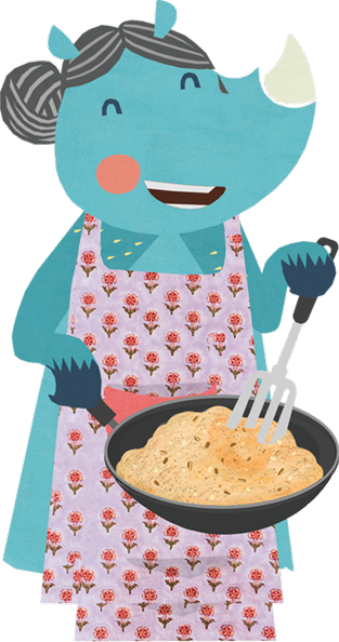Today, we explore what the Child Growth Standards Chart is. It basically measures a child’s height, weight, and length according to their age. This helps parents understand whether their child is growing well.
This article is more of an FYI for those parents who are interested in knowing all about a baby’s growth charts. When in doubt, always consult your doctor.
Why Use a Growth Chart?

A growth chart is commonly used by pediatricians and is a tool to assess a baby’s overall growth. Growth charts are not focused on the “numbers” (your baby’s weight or height). It’s just a simple, effective way to assess their growth and offers a bird’s-eye view of whether a baby is growing well or not.
Since we cannot manually measure intangible factors like a baby’s brain development or bone development, this is a standard tool used by most doctors.
Assessing Your Baby’s Growth Can Be Confusing
As we’ve said, babies come in all shapes and sizes. There’s nothing like “this is how a baby should look at XYZ age!”
Each baby will have a unique growth pattern, which is dependent on many factors like gender, genetics, metabolism, nutrition, environment, hormones, and more. For example, if both the parents are petite or are short in height, most likely their baby will be petite or short too. Because of these factors, parents may find it confusing to assess whether their baby is growing well.
So how can you check whether your baby is growing sufficiently for their age and stage?
One way to do this is to watch for the key signs of a healthy and thriving baby (“9 Signs Your Baby Is Healthy & Thriving!”).
Link: https://slurrpfarm.com/blogs/slurrp-it-up/9-signs-your-baby-is-healthy-thriving
Another way is to do this is by using a growth chart (also known as Child Growth Standards Chart). As mentioned earlier, this information is mainly for you to understand what a growth chart is and not for you to assess or diagnose your baby yourself.
Decoding Babies’ Growth Charts: Step by Step
What does a growth chart tell you?
A Child Growth Standards chart helps doctors and parents see if a child is growing properly. It shows the expected height and weight for kids at different ages.
In other words, the chart shows what the height and weight of babies of a particular age group should generally be. This information is simply plotted on a graph.
By comparing a child's measurements to the chart, we can tell if they are growing as they should or if there might be a problem with their growth.
Standard charts used
There are different kinds of growth charts available for babies worldwide by popular organizations. Generally, in India, the growth charts by WHO (World Health Organization) are popular among doctors, educators, and parents.
You can find the WHO growth charts here: https://www.who.int/tools/child-growth-standards/standards/weight-for-age
The growth charts are segmented as per:
1) age group: 0-6 months, 0-2 years, 2-5 years, etc.

2) gender: boy or girl
So, choose the right category: your baby’s gender + your baby’s age group + height or weight.
Next, in the left-hand tab, you can see various growth charts, including:
1) Weight for age
2) Length/height for age
3) Weight for length/height
4) Head circumference for age, and so on
There are also separate charts available for premature babies or those with down syndrome, as their growth curve and standards will be very different.
 Did you know
Did you know
How to read the chart?
Open one of the charts in the link given above (click on a category that has “Percentiles” in the heading). Also, match your baby’s gender and age.
Here are some quick links to use as an example:
Girls chart- Weight-for-age: Birth to 2 years (percentiles) - https://cdn.who.int/media/docs/default-source/child-growth/child-growth-standards/indicators/weight-for-age/cht-wfa-girls-p-0-2.pdf?sfvrsn=37c200a9_12
Boys chart- Weight-for-age: Birth to 2 years (percentiles) - https://cdn.who.int/media/docs/default-source/child-growth/child-growth-standards/indicators/weight-for-age/cht-wfa-boys-p-0-2.pdf?sfvrsn=4db44d93_12
|
DID YOU KNOW: “Percentage” is a way to express a number as a fraction of 100 (written: “45%”). “Percentile” is used to express how a score compares to other scores in a data set (written: “45th percentile”) |
On any chart, you will observe various percentiles placed inside the graph, such as 5th, 10th, 50th, or 85th. Percentiles are measurements that show how your child is growing as compared to other children of that age.
A Note on Percentiles
- It does not matter what percentile your baby is born at. A lower percentile (e.g. 5th) does not mean they’re underweight or a higher percentile (e.g. 85th) does not mean they’re overweight. Children will usually grow according to their own percentiles. So if a baby is born at the 5th percentile, they are likely to continue growing at that percentile. If you have any doubts, speak to your pediatrician.
- If you observe that your baby has fallen off the growth chart – e.g., if they were born at the 50th percentile (0 months) but have now fallen to the 5th percentile (7 months) – speak to your doctor immediately to evaluate the reasons. If you observe drastic drops or rises in percentiles, it should be brought to the notice of your doctor.
What Does This Percentile Mean for My Baby?
Now once you have found the percentile for each of the age-appropriate categories for your baby, how do you read or interpret it?
We will use an example from the percentile link above to show you how! Let’s say your baby:

- is a girl
- is 1 year old, and
- weighs 9 kgs
This places her in the 85th percentile. This means in a population of babies who are growing optimally, your baby weighs more than 85% of girls her age.
Does This Percentile Indicate My Baby’s Health?
As mentioned earlier, being in a higher or lower percentile is not enough of an indicator of your child’s health or growth. The rate of growth is what’s important.
If your baby was at the 5th percentile at 0 months (at birth), they should continue to grow as per the curve. At 6 months, they should still be at the 5th percentile (and not lower).
- Low percentiles: A one-time low percentile may not be indicative of the complete health status. Even a 5th percentile baby may be as healthy as a 95th percentile baby.
- Oscillating percentiles: Babies may move up and down the percentiles once in a while; oscillating between 5% and 10% is normal.
A Reminder!
Apart from nutrition, so many different factors play a role in how and how much your baby is growing, like genetics and environment. So, avoid treating the Growth Chart as the only parameter for your baby’s growth. It should be considered along with parameters like developmental milestones, enjoyment at mealtimes, energy levels, illnesses, or preexisting health conditions.
 We suggest
We suggest





















